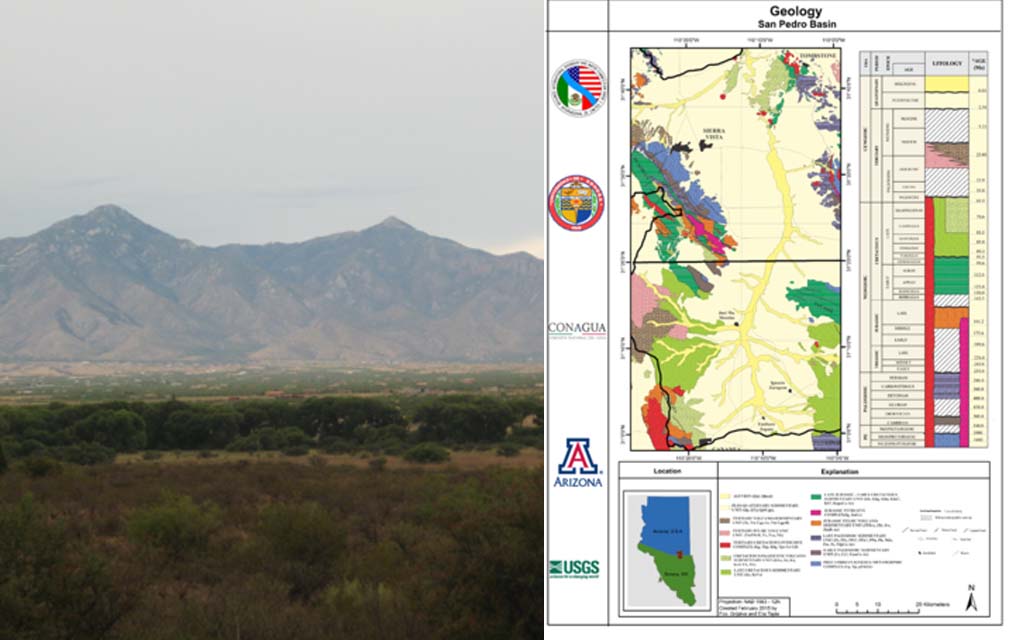
For the first time, information about the San Pedro River Aquifer is now available from both the U.S. and Mexico in a new, collaborative report issued from the International Boundary and Water Commission, the Mexican National Water Commission, the U.S. Geological Survey and the Universities of Arizona and Sonora.
Groundwater in the San Pedro River basin is a vital resource for the people and environment of both the U.S. and Mexico. The study marks the first time that federal government and university scientists from both countries have collaborated to collect data and jointly prepare binational and bilingual databases and maps of the Binational San Pedro River Aquifer, which spans the border between the States of Arizona and Sonora. The maps in this report illustrate how water, geology, climate and vegetation are integrated across the border. Results build a foundation for understanding and can be used by agencies, land managers, universities and decision-makers to make informed choices about current and future water resources.
“Understanding the Binational San Pedro River Aquifer and other transboundary aquifers is the first step in planning for a clean and adequate water source for future generations,” said USIBWC Commissioner Edward Drusina, P.E. “I am confident that this new binational partnership that developed under this project, led by cooperative, responsible experts with our support, will continue to study our border ground water.”
Until this report was published, scientists in each country had limited access to data related to geology, soils, vegetation, climate and other water-related subjects. This was due to a variety of reasons, including differing languages and classification schemes. For example, geology, which is the foundation of all aquifer studies, was classified differently in each country, posing challenges for understanding groundwater quantity and flow. For this report, geologic units were reclassified so that a truly cross-border understanding of the geology now exists.
“This study produced much more than a report, it opened doors to a thriving scientific relationship between the U.S. and Mexico,” said James Callegary, USGS scientist and lead author of the study.
Findings improve the understanding of groundwater flow and how it’s connected between the U.S. and Mexican parts of the aquifer system in this basin. Future studies will use this information as a foundation to advance our knowledge of the hydrology of the binational aquifer. Further research is currently being planned, and ongoing studies are being conducted in Texas, New Mexico and Arizona.
“The Transboundary Aquifer Assessment Program is a unique partnership of government agency researchers and universities in the U.S. and Mexico,” said Sharon Megdal, Water Resources Research Center Director, University of Arizona. “It is gratifying to see the culmination of this binational, collaborative effort to characterize the transboundary San Pedro Aquifer. We look forward to sharing our findings with stakeholders in the region.”




